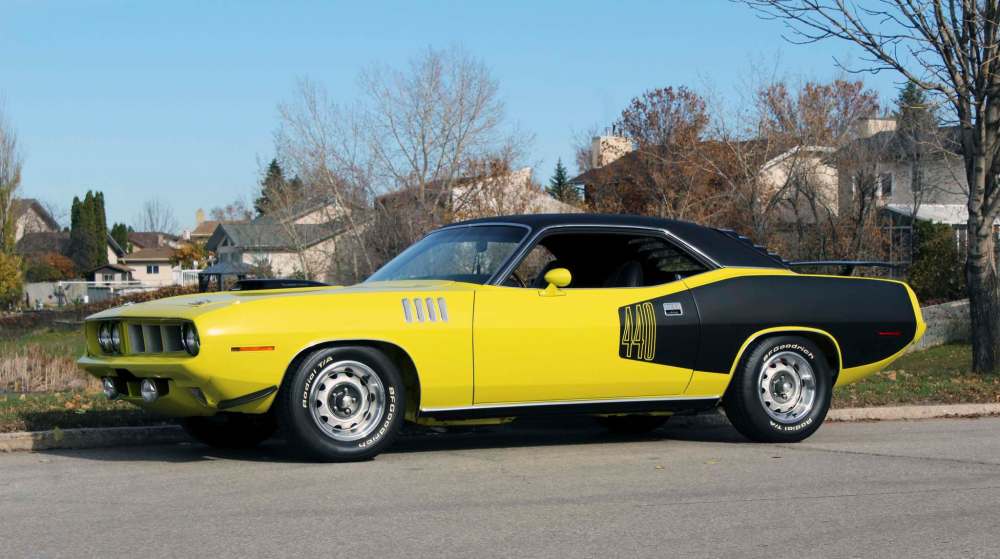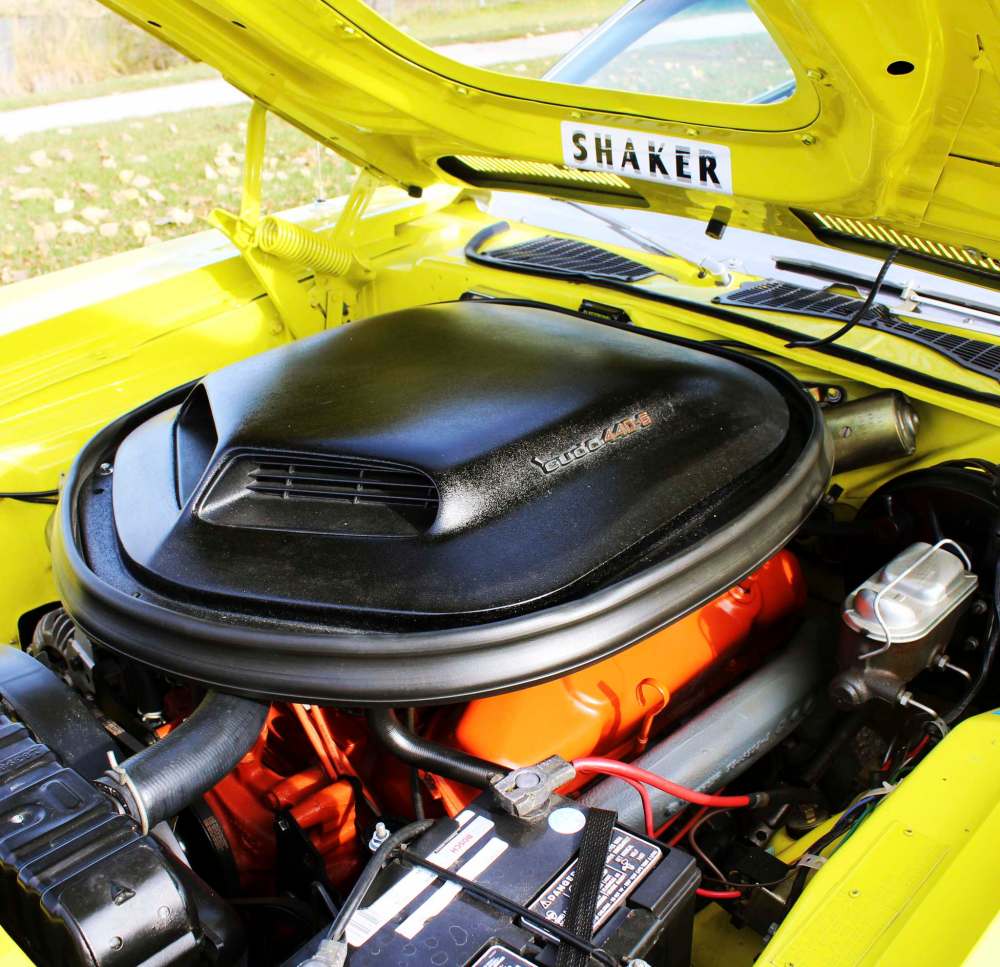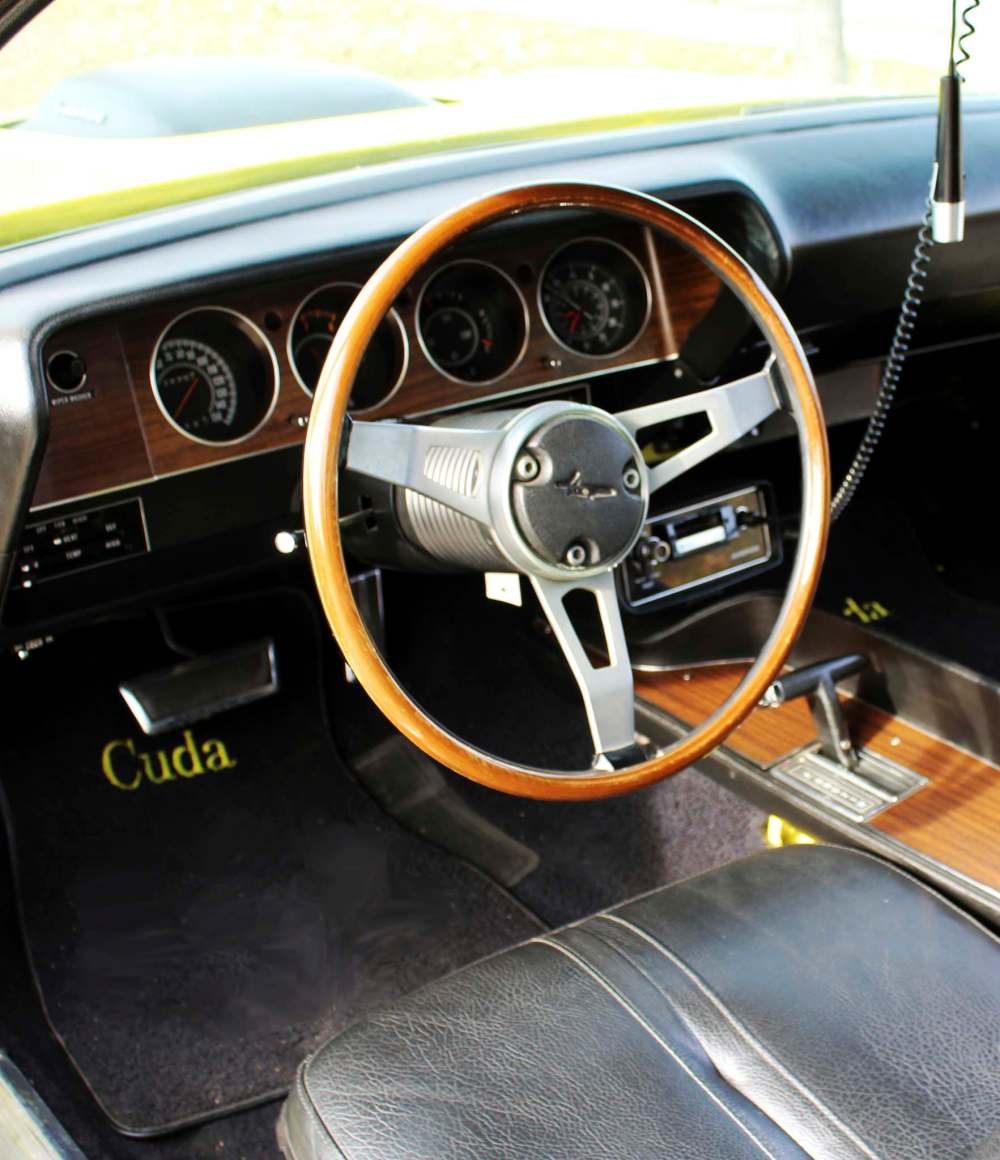Yeah, it’s got a 440 cubic-inch six-barrel V-8
Ultra-rare 'Cuda loaded with style and performance options
Advertisement
Read this article for free:
or
Already have an account? Log in here »
To continue reading, please subscribe:
Monthly Digital Subscription
$1 per week for 24 weeks*
- Enjoy unlimited reading on winnipegfreepress.com
- Read the E-Edition, our digital replica newspaper
- Access News Break, our award-winning app
- Play interactive puzzles
*Billed as $4.00 plus GST every four weeks. After 24 weeks, price increases to the regular rate of $19.00 plus GST every four weeks. Offer available to new and qualified returning subscribers only. Cancel any time.
Monthly Digital Subscription
$4.75/week*
- Enjoy unlimited reading on winnipegfreepress.com
- Read the E-Edition, our digital replica newspaper
- Access News Break, our award-winning app
- Play interactive puzzles
*Billed as $19 plus GST every four weeks. Cancel any time.
To continue reading, please subscribe:
Add Free Press access to your Brandon Sun subscription for only an additional
$1 for the first 4 weeks*
*Your next subscription payment will increase by $1.00 and you will be charged $16.99 plus GST for four weeks. After four weeks, your payment will increase to $23.99 plus GST every four weeks.
Read unlimited articles for free today:
or
Already have an account? Log in here »
Hey there, time traveller!
This article was published 24/01/2020 (2083 days ago), so information in it may no longer be current.
By the early 1960s most domestic manufacturers had introduced more affordable compact cars, but there was still a need for livelier vehicles to attract the growing youth market.
In 1964, the Plymouth Barracuda filled that void, becoming the first pony car to hit showrooms a full two weeks before the Ford Mustang. Based on the Plymouth Valiant, its beginnings were of the same humble nature as the Mustang , which was based on the Ford Falcon.
The uniquely styled “glassback” Barracuda had a strong following, but it never reached the popularity of the competition. That would change when the Barracuda was redesigned for 1970.

The muscular-looking E-body was all-new and could easily accommodate any engine from the Chrysler lineup, including the mighty 426 cubic-inch Street Hemi V-8.
Despite being the new kid on the block and aimed squarely at veteran competitors, including the Ford Mustang, Chevrolet Camaro and AMC Javelin, it’s tough to overlook the impact the Plymouth Barracuda and its performance-minded ’Cuda sibling had on the street scene.
Seeing sales double over the 1969 model was encouraging and the new ’Cuda was also a performer to be reckoned with both on the street and on the track. Unfortunately with the rising cost of insurance and fuel, sales never had a chance to really take off and only 19,515 ’Cudas were produced for 1970 and 6,602 for 1971.
When you factor in the powertrain and optional equipment this 1971 ’Cuda hardtop brings those numbers down even lower. It’s one of only 237 cars equipped with the V-code 385 horsepower 440 cubic-inch six-barrel V-8 and the addition of the optional HD A-727 automatic transmission drops that number to 129. Additionally, this is one of only seven specially equipped ’Cudas used by Plymouth for promotional use at auto shows.
This early model was highly optioned with almost every available feature. The fender tag located under the hood on these models gives the option codes for the factory-installed equipment, a sort of DNA code for the car — in this case two tags were required to list all the information.

Part of local collector Ed Danylchuk’s impressive collection, this low-mileage 1971 ’Cuda hardtop comes with its numbers matching powertrain and the factory broadcast sheet.
Finished in Curious Yellow with a black vinyl roof, it certainly stands out in traffic. This Super Track Pak optioned car is also equipped with a 4.10:1 ratio Dana 60, Sure-Grip rear axle, power steering and power front disc brakes. The black quarter panel tape treatment, often referred to as billboards, became very large in 1971, covering almost all the panel and a third of the door, which features the 440-engine call-out. It also has black front chin spoilers, a rear deck spoiler, rear window louvers, a fresh air Shaker hood scoop and bright rocker panels and drip rail mouldings. There’s also the optional body coloured grille, road lamps, chrome hood pin tie downs, exhaust tips and tinted glass and the optional road wheels wrapped in BF Goodrich T/A radial tires.
The vinyl interior is nicely equipped with black hi-back bucket seats with a centre console and slap stick floor shift, simulated woodgrain rim-blow steering wheel, light package, three-speed variable electric windshield wipers and washers, Rallye instrument cluster and Multiplex AM/FM stereo radio. A new option for 1971 was the floor-mounted cassette player and recorder. The player and recorder also came with a stereo microphone that plugged into a socket in the front of the unit. Whether it was meant for singing along or recording a memo at highway speeds — today it would clearly be distracted driving.
After 1971, the big-block engines would disappear and the ’Cuda would continue through 1974 with small-block power. By the mid-1970s, the gas crunch and high insurance rates for muscle cars had sadly relegated these potent ’Cudas to the back row of most used car lots. Today, thanks to their rarity, E-body Plymouth ’Cudas sit at the top of the most-wanted list — and their values reflect this.

57ford@mymts.net
History
Updated on Thursday, January 30, 2020 5:21 PM CST: Headline changed.

